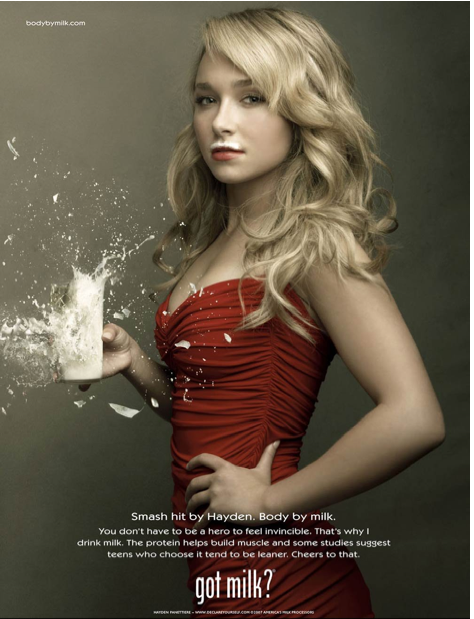Why all Humans are basically Lactose Intolerant.
Science! The normal human condition is to lose tolerance for lactose in adolescence.
Simply Explained, via Explain like I’m 5.
Note: “Mongolians and other nomadic Turkic peoples in Asia are all about the cheese, curds and just dairy in general.
Mongolian traditional diet consists of meat and dairy. Even our alcoholic drink is made of mare milk…”
And: “Dairy is used heavily in Indian diet. For example, ghee(clarified butter), yogurt and buttermilk etc are heavily used.”
Also, and this is holy s**t:
• Cheese consumption has tripled in the past three decades in the US of A.
• The average American eats 33 pounds of cheese a year!
So how did this happen?
Well it turns out that our own government has been in cahoots with the processed food industry to get us to eat more cheese. In the 1970s, research had begun to link saturated fat with heart disease. Americans began to pay a little more attention to their health and diet and started cutting out saturated fat. The poster child for fat at the time was whole milk. The dairy industry removed the milkfat to meet our demands. The problem for the dairy industry was that , through changes in the way they fed the cows and the hormones they gave them, they had turned cows into milk factories. The end result was that they had a huge surplus of excess milkfat. All this fat had to go somewhere. It went into cheese.
The dairy industry then went to the federal government for help. The government spent billions of dollars bailing out the dairy industry and bought the cheese. They gave it as food subsidies to the poor and school lunches, but that wasn’t nearly enough. The government was left to store the cheese in caves. That’s right, our government was paying to store the dairy industry’s surplus – in caves. They had over 600 million pounds of cheese!
In 1983, Ronald Reagan said no more and stopped the subsidies. But instead of being encouraged or legislated to decrease production, the dairies found a way to get us to eat more cheese using our own government against us. They created a system called the “check-off” under the Department of Agriculture. The dairy industry taxes itself to raise money to promote cheese and other dairy products.
Got milk? They spend about $400 million dollars a year for advertising and promotion. Actually, I should say we spend that money since its our own Secretary of Agriculture who oversees it.
The food industry has been working on its own as well. They have worked hard to completely change the way we think of cheese. Cheese used to be something you ate on its own as an appetizer or snack. The dairy industry turned cheese into a common ingredient that we add into just about everything from pizza crusts to crackers. The result was that all the fat people tried to avoid but cutting down on whole milk came back into the diet as cheese in greater quantity. We now are getting huge amounts of fat and calories from cheese in ways that we never did before.”
~
As others have mentioned, most Asian people are lactose intolerant. From a western perspective this seems odd, but is actually the “normal” human condition. Everything that follows is from Marvin Harris’s book Our Kind, which I’m trying to simplify into ELI5 style.
Lactose is the sugar in milk. Your body can’t use lactose, and has to break it down into simpler sugars. This is done by the enzyme lactase. “Naturally” mammals produce lactase while they are nursing from their mothers, but then stop producing it as they grow older because “naturally” they won’t ever consume milk again.
I say “naturally” and “normal” because humans are different, we developed agriculture and domesticated other animals. This takes us out of the natural cycle a bit, allows us to do things our biology wasn’t really intended for. However, natural selection still applies – if we do something that increases our survival rate and success at reproducing, that trait will be selected and pass on to the next generation, propagate and become “normal”. These traits can be genetic (genes, like being strong or fast) or cultural (memes, like wearing makeup).
When we started domesticating milk-producing animals such as goats or cows, we gained the option to consume milk as adults. Our natural state does not allow us to do that, but some individuals would be different and possess a mutation wherein they would continue producing lactase as adults, allowing them to consume milk. In some cultures that trait was very valuable, resulting in increased survival and reproduction, thus the trait became very common and eventually the “normal”. In other cultures the trait had no net gain and therefore does not propagate, and so not the “normal”.
So what’s the difference in the cultures? What makes adult lactase production a big win for those of Northern European descent, but pretty worthless for East Asians? It has to do with geography and available sources of calcium and vitamin D.
You need calcium in your diet. You can get that calcium a few different ways – milk being one, leafy green vegetables being another. To make use of calcium your body also needs either vitamin D or lactose. You can get vitamin D from seafood, or your body can make it when exposed to sunlight. Without vitamin D, lactose assists with the use of calcium. So, cultures with easy access to leafy greens plus sunlight or fish, calcium is taken care of and milk has no advantage. Cultures without access to leafy greens – or without access to sunlight or seafood – need dairy either as a source of calcium, or a source of lactose to use the calcium, or both.
This leads to the difference between dairy that’s fermented (yogurt or most cheese) or unfermented (straight up milk). Fermented dairy products still have the calcium, but the lactose is broken down into simpler sugars, so lactase is not necessary to digest it. Therefore a culture with access to fish or sunlight but not leafy greens would benefit greatly from keeping dairy animals, but don’t benefit from still creating lactase as adults – they consume the milk as yogurt or cheese to get all the calcium they need and make use of that calcium thanks to vitamin D.
So now finally, enter the Northern Europeans – the people that would eventually become western society as we know it today – developed in a climate that required them to bundle up most of the time due to extreme cold, so no sunlight to make vitamin D. They also had very little seafood in their diets at the time (~12,000 years ago), and limited access to leafy green vegetables. Calcium and vitamin D are lacking. So, those individuals who possessed the ability to consume unfermented dairy as adults had an advantage. They survived and bred more frequently, thus passing the trait on and making it “normal”. Within 5000 years after the domestication of dairy animals, 90% of northern Europeans possessed the ability to produce lactase into adulthood and dairy of all types was commonplace.
Meanwhile let’s consider China ~12,000 years ago. Leafy greens were a major part of the diet, so calcium is not an issue. Those in coastal areas developed fishing techniques much earlier than Europeans, as well as a trade infrastructure to transport that seafood pretty far into the mainland, so vitamin D is not an issue. Thus no advantage to unfermented dairy consumption among the bulk of Chinese. Only those far inland and to the north would have an issue – those peoples who became the Mongols, who did consume dairy. Furthermore even fermented dairy never took hold in Chinese culture because of their trade networks – the Chinese were able to obtain their labor animals from other cultures (tibetans, mongols, etc) – therefore did not breed their own cows or goats. Pigs were the primary meat animal raised. With no need for dairy, and without really having it around in the first place, they developed into a culture with virtually zero dairy of any type. And much like the Northern Europeans went on to culturally dominate western civilization, Chinese culture influenced many others in Asia.
So… in summary: Dairy consumption has two extremes produced by geography and available diets: lots of dairy including raw milk driven by Northern Europeans, and virtually zero dairy of any kind driven by the Chinese. Between those extremes are everybody else, who for the most part made use of fermented dairy for its calcium, but remain lactose intolerant.












Read 0 comments and reply